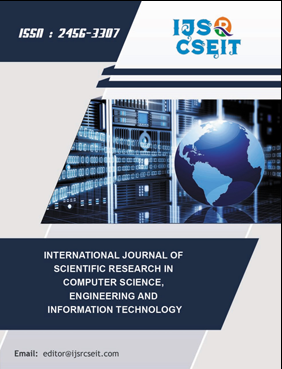Prevention of Phishing Attacks on Online Voting System Using Visual Cryptography
Keywords:
Authentication, Visual Cryptography, Image captcha phishing, Phishing, Open CV Library Algorithm, Online VotingAbstract
The aim of Voting System using Visual Cryptography is to provide facility to cast for critical and confidential decisions of internal corporate. It provides the flexibility of casting vote from any remote place. The confidentiality of the election is maintained by applying the appropriate security measures so that the voter can vote for any participating candidate but only if he logs into the system by entering the correct password which is generated by merging the two shares using Visual Cryptography scheme. The administrator is responsible for sending the shares, 1st share to voter email id before election and 2nd share will be available in the Voting System for his login during election. The voters get the secret password to cast his vote by the combination of share 1 and share 2 using Voting Cryptography. Phishing is an attempt by an individual or group which aims to get personal confidential information from unsuspecting victims. Internet voting focuses on security, privacy, and secrecy issues, as well as challenges for stakeholder involvement and observation of the process.
References
- NetworkSecurity, https://en.wikipedia.org/wiki/ Network_security, accessed on May 2015.
- JoeyPaquet, http://users.encs.concordia.ca/~paqu et/wiki/index.php?title=Capability_ maturity_model, accessed on May 2015.
- Villafiorita A, Weldermariam K, Tiella R, “Development, Formal verification and evaluation of an e-voting system with VVPAT”, IEEE Transactions on Information Forensics and Security, 2009, p.no. 651- 661.
- Abdalla Al-Ameen and Samani Talab, “The Technical Feasibility and Security of E-Voting”, The International Arab Journal of Information Technology, Vol.10, No.4, July 2013, p.no.397-404.
- https://securelist.com/analysis/quarterly-spam- reports/69932/spam-andphishing-in-the-first- quarter-of-2015/, Phishing attack, accessed on 12.09.2015.
- M. Mounika Reddy and B.Madhura Vani, “A Novel Anti phishing Framework based on Visual Cryptography”, International Journal of Advanced Research in Computer and Communication Engineering, Vol.2, Issue 9, Sep 2013, P.No.3434- 3436.
- Mayur Patil, Vijay Pimplodkar, Anuja R.Zade, Vinit Vibhute, Ratnakar Ghadge, “A Survey on Voting system techniques”, International Journal of Advanced Research in Computer Science and Software Engineering, Vol. 3, Issue. 1, Jan 2013, p.no. 114-117.
- Shyong Jian Shyu, Ming Chiang Chen, “Minimizing Pixel expansion in Visual cryptographic scheme for General Access Structures”, IEEE Transactions on Circuits and Systems for Video Technology, Vol. 25, No. 9, Sep 2015.
- Liang H., & Xue Y., “Understanding security behaviours in personal computer usage: A threat avoidance perspective”, Association for Information Systems, 11(7), pp. 394–413, 2010
- Ollmann G. The Phishing Guide Understanding & Preventing Phishing Attacks, NGS Software Insight Security Research.
- Anti-Phishing Working Group, Global Phishing Survey: Trends and Domain name use in 1H2009, 2009Anti-Phishing Working group .http://www.antiphishing.org/.
- Yuancheng Lia et al., “A semi-supervised learning approach for detection of phishing web pages”, Optik, (124), pp. 6027– 6033,2013 .
- Nalin Asanka Gamagedara Arachchilage, Steve Love, Security awareness of computer users: A phishing threat avoidance Perspective, Computers in Human Behavior (38), 2014.
Downloads
Published
Issue
Section
License
Copyright (c) IJSRCSEIT

This work is licensed under a Creative Commons Attribution 4.0 International License.

